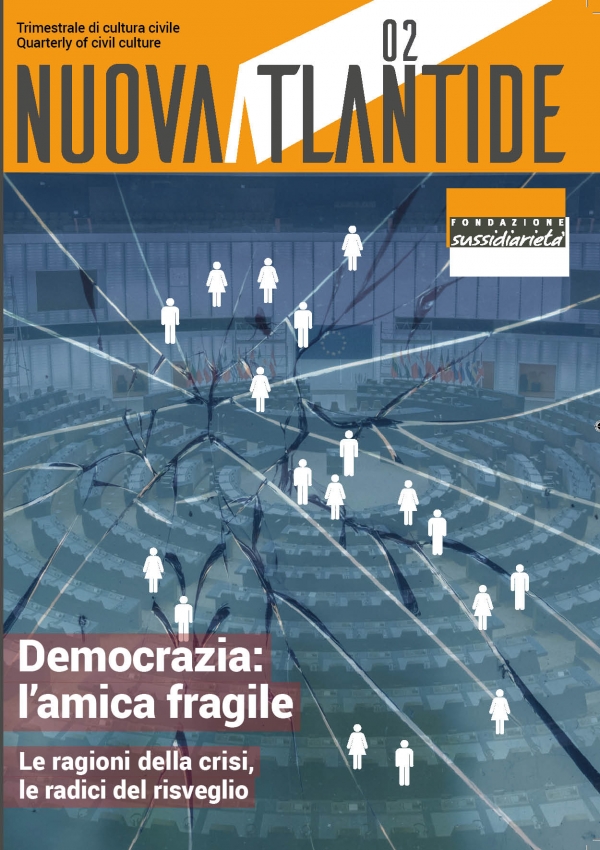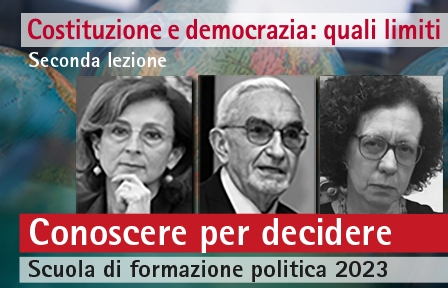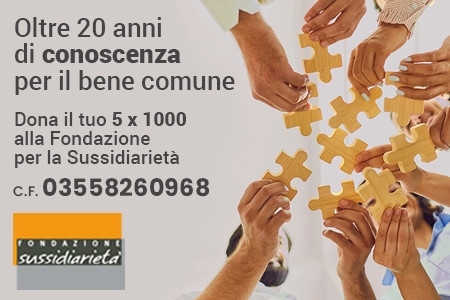Every day, whether we know it or not, we run into misleading information and fake news. Washington State University digital literacy expert Mike Caulfield has studied this thorny problem. And he suggests an effective way to tackle misinformation. In his book, Web Literacy for Student Fact-Checkers, he argues the web is a unique terrain, substantially different from print materials. Therefore, any attempt at teaching web-based information literacy should take into account the unique challenges the Internet poses, as well as its peculiar advantages – strategies, tactics, and tools, which, properly used, can get students closer to the truth of a statement. To evaluate information on social media, Caulfield proposes a method in four steps called SIFT: Stop, Investigate the source, Find trusted coverage, Trace claims, quotations and media to their original context. Without giving in to the myth of unbiased sources.
How can we tackle information and misinformation in a world that is overloaded with news and provides very little education on how to handle it?
To answer to you, I can use a little story that I tell students as well: we can call it the “parable of the lake.” Imagine that you are walking alongside a lake, and you see a bottle in it, with a little note sticking out. So, this bottle washes up on shore and you run over to open it up. The piece of paper inside is laid out pretty well – at the top it says: “N95 masks don’t work.” Some charts and well-written explanation follow: it seems well-sourced, with footnotes and data. Its author has something called an NMD, a title you’ve never heard of before, but it sounds like some sort of credential. The logic of the piece says: since the mask weave of an N95 mask is three microns, and the size of the coronavirus is one micron, the virus is going to sail right through the mask weave like a marble through a chain link fence.
And so, you go and tell it to your friend: “Hey, stunning news, N95 masks don’t work”. And your friend says: “Well, how do you know that?” “I found a note in a bottle floating in a lake.” And your friend says: “Well, that doesn’t sound very reliable.” You say: “Well, I did all the work. I checked and I saw that this person has a degree, and the paper had charts and footnotes. Then, the logic is unassailable, just do the math: the mask weave is three microns, and the coronavirus is one!” I think that we all agree that your friend would be quite justified in saying: “Look, you did all this work, right, but you missed the most important things. First question is, who wrote this? And do they have some expertise? Do they have a history of reliability? Can they be trusted to be careful with the truth? What are they doing? What is their agenda?”
The real issue is the reliability of the witness.
“And then, the second question is: if you really wanted to learn about N95 masks, would your first choice be to look for a bottle floating in a lake, or is there something better out there? Is there a better source or a better set of sources? Is there a better place to put your attention?
So, the thing that I argue about education is, whether we want to admit it or not, we train our students to do this. If you think about it, the note in the bottle might be a web post. The bottle that carries it to you might be Facebook or something like that. The lake might be the web. And the way that we train students to deal with this is to say: “Oh, well, when you get this note in the bottle, let’s apply critical thinking: we are just going to think really hard and try to make a decision based on what lands in front of us.” But there is an important piece missing there: before you even invest time in it, you have to know if this is worth your attention. Is this what I should be reading? Is this a fringe theory or is this somewhere within the bounds of accepted science?
So, before getting to critical thinking, we need another process that we have not taught students, and this is what the SIFT methodology is about: doing quick checks to see if you want to move forward with this particular treatment of an issue. And if that is not the case, then you want to find other documents. When we address this and show the students how to do it, it is amazing to me what happens. Many of them, who seemed lacking any critical thinking ability before, once they ground themselves in material that’s worth their time and find their way to it, and they are able to sort what is not deserving their attention from what is, they start talking in a very nuanced, scholarly way. The problem is really getting them over that first step where they’re just hitting a lot of junk and reacting to it versus trying to find better and more in-depth treatments.”
If I think about the SIFT methodology, the first part of the process gets often banalized as: “Is this source biased?” Instead, in your book you make a big distinction between agenda and bias…
“Yes, that’s a huge distinction! I have students that tell me sometimes that it is one of the most important things that they learned because once you’re taught, “Oh, look for bias,” you can see bias in anything, right? But if you look at a news reporting organization that hires reporters, hires factcheckers, spend a lot of their day building contacts and making calls to confirm things, it is obvious that they are spending a lot of resources to try to get the story right. Now, they may not always do that. Jeff Bezos owns The Washington Post, the corporate interest in these things does have some influence, all of that still applies. But the fundamental difference lies in the type of organization, if you are looking at a news reporting one that funds people in ways that make them more capable to discover and verify the truth, or if your looking at a blog like Gateway Pundit, which was recently banned on Twitter. If you look at it, you can ask: where does its money go? Does it have reporters on the ground? Does it have fact checkers? If it makes an error, does it have a retraction process? Is that process public? Is the blog part of professional organizations that subscribe to professional standards? And if everything indicates that this blog, which promoted lots of conspiracy theories and misinformation, is not setup to do news, but to do something different, then move on! Find another source! I think that if you just start with bias, then too often you’re getting the students into a very nuanced discussion on bias before they even understand fundamental differences about different types of organizations.
Like I always say to my History students: it is not possible to find an unbiased historical document. Even if it is a register, by the very fact that someone has decided to keep it and to record certain information and not others, someone is making a specific judgment about it, and so, there is a bias there.
Absolutely. An unbiased source does not exist. As long as you are looking at organizations that have an agenda that is broadly about information gathering, sharing and reporting, you can start to say that The Wall Street Journal’s reporting generally has pretty good standards, even if it tends to lean in a certain direction. You can check if The Wall Street Journal is reporting the same thing as The L.A. Times, that would be a pretty good indication that that the story is solid. You can start to say, well, if we see this news across multiple reporting organizations, we are starting to get a sense that it is reliable.
It is much more difficult to draw back when you are passionate about something, especially now when, with the technology we have, it takes just two seconds to share something…
There are different levels of emotion. At a somewhat elevated level of emotion, habits can be a powerful thing. Sometimes I realize that I am just about to share something without having checked it, habits trigger something and I think: wait a second, I actually didn’t check that, let’s go back and look deeply into the source. When emotion gets really high, drawing back may be difficult, because it can overwhelm. But the emotions are not the problem. Usually when your emotional reaction is bad, it’s not necessarily because your values are bad, it’s because the emotion has been misinformed. You thought you were looking at the full story, ignoring that it was just a piece, for instance, while knowing the larger context would have mitigated the circumstances and your reaction quite a bit.
Fake news has always existed, there are plenty of examples, say, in Ancient Greece or during the Middle Ages. And yet, in many ways, they were not as problematic as they are today.
There are two things that I think are fundamentally different about the way the internet is working versus the print and oral culture of the past. The first is that context and facts have become separated. Until fairly recently, if someone was sharing with you, say, voting patterns in Michigan, it would have been somebody that was an election reporter, and you would get those figures wrapped in a context. Same thing if you were getting a video, you could not get to it without seeing it on the news and being forced to view it in a certain context. Only a set of professionals had access to certain information: a reporter filmed something going on in Saudi Arabia or Pakistan, they would share their film and try to set its context. Now context and facts have come apart, anybody can take them and spin them out, wrapping their own framing around it. I can take a video and clip it, I can download Excel files of voting results or COVID data, and even though I am not a professional in that area, I can set the context and tell my story around that.
And the second thing fundamentally different today is that we live in an attention economy, where you have a bunch of reporting, public data, scientists who are all producing information, information, information, and then you have a bunch of people that I would call “attention entrepreneurs,” who ask: how can I piece this information together in a way that is going to capture the attention of the audience I want? Of, for example, the potential nutritional supplement market I want? And it’s just a really tight feedback loop that’s really efficient.
So, those two things together, the fact that context and data have become really separable and you can do what you want with them, combined with an attention economy that incentivizes people to connect those data points in ways that build influence, whether it’s political or social or economic, are a real combustible mix.
You say that direct verification is often a myth. And so, good information is always mediated?
Yes, unfortunately: the first day you study statistics you learn there is a difference between data and statistics, right? Statistics is data to which we have applied certain mathematical models to make them meaningful. That distinction is really important. Many people think that because now we have direct access to the data, we can somehow be more informed, but that’s simply not true because the bigger piece of this is always how to make meaning out of it. And to do that, you need somebody with some sort of domain knowledge. Just yesterday I saw somebody proving that the COVID vaccine is a conspiracy and the vaccinations are fakes by showing the picture of someone who gets a shot and when the shot is pulled away, there is no needle there, it’s retracted in to the actual device. And, of course, everybody goes wild: “Wow, it’s all fake shots, it’s like a fake knife in the theater!” Well, if you were a reporter taking that photo, you’d say: hey, what’s up with this retractable needle? And the nurse would tell you that many places now use them because once the shot is given, there’s no chance of someone getting poked accidentally. But since we’ve separated data and context, we have an image, it looks like a retractable needle, and then we have a bunch of people who are just turning that into whatever they want.
Information is as good as its mediation, and choosing who mediates it for you is just an incredibly important choice.
“And this means,” you say in your book, “that we usually have to trust someone other than ourselves.”
Yeah. I have a post somewhere that says, be careful where you invest your trust, but you have to invest it somewhere. There’s no option to not invest trust somewhere. So, it’s always a choice where you invest. And you have to be careful about that. But the option where you just say, well, everything is equally untrustworthy, is just as odious as believing everything, trust anything. Both of those lead to really bad social effects. So it is about where you invest that trust. And thinking about investing that trust is the same way you would think about any other investment of your time or your money. What’s going to give me the best return on my investment of time, on my investment of trust?
Many of my friends have been burned by putting their trust in politicians, in institutions, … For instance, now in the U.S. the Centers for Disease Control (CDC) is saying that wearing two masks is more effective against COVID than one, when the first month of the pandemic the same people were saying not to wear any masks. How not to go to that extreme of saying: “Well, I can’t trust anybody”?
With my students, I bring it back to the discussion about agenda, about error and manipulation. All things that we should take seriously, but at the same time we can’t have this idea that one drop of error pollutes the whole thing. Scientists and reporters often have to make judgements in situations where there’s relatively low information. And the processes in both science and reporting are there not to prevent all error, but, when error occurs, to correct it over time and move us closer to the truth.
In response to your example, one of the things I would say is that in the United States the CDC still on average gives better guidance than the ordinary person you can meet on the street. They have a set of processes to do this. And even at the time the CDC was saying individuals don’t need to use masks, the truth is that many other countries’ health organizations worldwide were recommending their citizens the use of masks: so, you can’t really throw out the entire scientific community, internationally the scientific consensus was very mixed.
And then, there is a process by which this corrects over time. If you go out and just see a wall of sources that are saying the same thing, that means one thing. If the San Francisco Chronicle is the only outlet that is reporting a supposedly national issue, then it’s different. There are social structures around knowledge production and verification that protect us. And so, it’s more useful to think about newspapers as a larger system of verification, correction, and reporting than it is to think of them as individual newspapers. I think the news industry as a whole has a lot of issues, obviously, but thinking of it in that way is sometimes more productive. And a lot of the things that we’re arguing about are things where there is just broad consensus. If you want to apply your energies, your critical thinking to something, you probably want to apply them in the area that is in contention, for those things which are a matter of some debate rather than wasting your time on things that are relatively settled.
What does it mean to transfer this logic of thinking to the political arena?
What does it mean to trust a politician? You trust this person knowing that it is not because they are always right. I have to invest my trust in some people whom I have made a judgment about, I have deemed trustworthy. You want to find someone who really has three things: you want to find someone who, first, is in the position to know, who brings some sort of expertise, or life experience, or direct experience of an event. Second, someone who has shown that they are careful with both your trust and the truth, someone who has shown that they don’t take it for granted, they don’t manipulate it. And then, and here’s the final thing, thinking of the important role of mediation, you want someone who shares your values.















